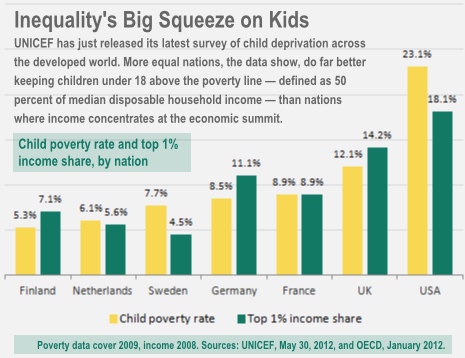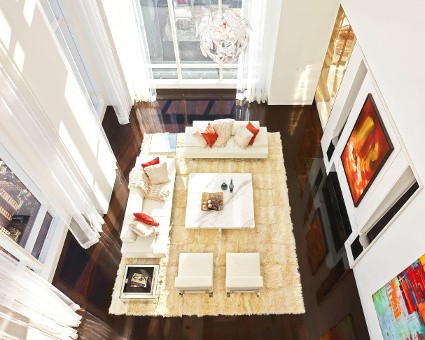How the Art Market Thrives on Inequality
Post on: 1 Май, 2015 No Comment

A few weeks ago, when Edvard Munch’s iconic painting “The Scream” went for about $120 million and became the most expensive artwork ever sold at auction, it seemed like we had reached the climax of a fine-art bubble. After all, from 2003 to 2007, the fine-art market grew even faster than subprime housing. And then it kept on growing, pausing only momentarily during the crisis before hurtling even further upward. Eleven of the 20 highest prices ever paid at auction have occurred since 2008, when the global economy all but collapsed. Less than a week after the Munch auction, Mark Rothko’s “Orange, Red, Yellow” sold for nearly $87 million .
Related Coverage
It’s the Economy
Many economists say that art can’t be in a bubble because, frankly, it’s not much of an investment in the first place. Unlike stocks, an artwork’s price reflects numerous nonfinancial intangibles, like the pleasure of owning a painting or, perhaps more important, its ability to signal the owner’s vast wealth and erudition. While stocks can provide an ongoing payment stream (via dividends) and are traded in public markets, art collectors must pay to protect their investments. It’s also much harder for collectors to resell expensive art. Not only is the market opaque, but few artists have real long-term value — Jasper Johns and Andy Warhol are rarities. Sergey Skaterschikov, who publishes an influential art-investment report, says that no painting bought for $30 million or more has ever been resold at a profit.
Artwork itself may be a lousy investment, but selling it (and advising on it and being an art-world consigliere) can be pretty profitable. Because each piece of fine art is unique and can’t be owned by anybody else, it does a more powerful and subtle job of signaling wealth than virtually any other luxury good. High prices are, quite literally, central to the signal — you don’t spend $120 million to show that you’re a savvy investor who’s hoping to flip a Munch for $130 million. You’re spending $120 million, in part, to show that you can blow $120 million on something that can’t possibly be worth that much in any marketplace.
A column about how economics can explain the world.
Art for Money’s Sake FEB 3
Who Wants to Buy a Politician? DEC 9
The Business Tycoons of Airbnb NOV 25
How Disney Turned ‘Frozen’ Into a Cash Cow NOV 18
Art is often valuable precisely because it isn’t a sensible way to make money. And perhaps as a result, it has become even more valuable of late. Benjamin Mandel, an economist at the Federal Reserve Bank of New York, has been studying the art market because, he says, “it’s a great way to study asset price valuations.” Mandel read reports suggesting that the market was growing at an unsustainable clip. For one thing, prices have gone up far faster than global G.D.P.
But then Mandel realized that we had been looking at the market incorrectly. Fine art, he said, is not really part of the overall global economy. Instead, it’s part of the economy of a small subset of the super-superrich, whom some economists call Ultra High Net Worth Individuals, or U.H.N.W.I.’s. And their economy, unlike ours, is booming. In that alternate world, fine art as a percentage of the economy has stayed stable over the last decade, in part because a flood of new U.H.N.W.I.’s in China, India and other developing nations has entered the art-buying market with great enthusiasm. In 2003, the sales at Christie’s Hong Kong totaled $98 million. Last year, they were $836 million.
The art market, in other words, is a proxy for the fate of the superrich themselves. Investors who believe that incomes and wealth will return to a more equitable state should ignore art and put their money into investments that grow alongside the overall economy, like telecoms and steel. For those who believe that the very, very rich will continue to grow at a pace that outstrips the rest of us, it seems like there’s no better investment than art.

So how can a thirsty outsider get in on this market’s profits, short of opening a gallery or becoming an expert adviser? That’s the supposed role of art investment funds, like the Fine Art Fund. Fund managers remove the pleasures and ego-stroking that distort the investment principles of art ownership by collecting money — the minimum investment at the Fine Art Fund is $500,000 — from individuals, much like a hedge fund or asset management firm does. These assets then serve to create something of a virtual art gallery. Managers use art expertise and close industry connections to try to buy art cheaply, sell it high and return the profit to their investors.
In this sense, the current art market seems a lot like the Gold Rush. In the late 1840s, there were tons of people who wanted to find gold, but it was mainly the middlemen, who sold the pickaxes and gold pans, who made money. And right now, the world is going to need a lot more pickaxe salesmen — advisers, consultants, gallerists, buyers. One confident art-fund manager told me that his pitch is simple: there are only around 3,000 top-quality items sold each year and more than 3,000 people want them. The number of buyers is growing faster than the amount of art.
The pitch is great, except that many art funds have collapsed. That’s because art isn’t gold, or any other commodity in which units can be evaluated objectively. The value of any artist’s work is determined by an insider world of cultural arbiters who coordinate with one another. They know long before the rest of us which new artist is going to have a big show, who is going to be trashed in a review or whose piece was just sold privately for a small fortune.
Because the art market isn’t regulated like financial securities, insider dealing is generally not illegal. In fact, being a truly influential insider is so rewarding that the slots are zealously guarded. Larry Gagosian, perhaps the world’s most influential gallery owner, needs a nearly impossible combination of skills — deep art knowledge, master salesmanship, charm, ruthlessness, financial savvy and the respect of the artists themselves — to maintain his edge and root out competition. When you start a consulting service or invest in an art fund, you are an outsider seeking to make money in a shadowy market filled with brilliant insiders just like him. No wonder it rarely works.
As I talked to art advisers and economists, I kept thinking of my childhood in Westbeth, a subsidized housing complex for artists in Greenwich Village. Our neighbors, painters and sculptors among them, were decidedly not rich. To them, the very idea that art should make someone wealthy was laughable, even offensive. It makes me happy to think that this world of art-as-investment is a minuscule fraction of the art world overall. Most people who create, trade and own art do it for a much simpler reason. They just like it.
Adam Davidson is co-founder of NPR’s “Planet Money,” a podcast. blog and radio series heard on “Morning Edition,” “All Things Considered” and “This American Life.”
A version of this article appears in print on June 3, 2012, on page MM26 of the Sunday Magazine with the headline: I’ll take the Rothko For $87 Million. Today’s Paper | Subscribe














